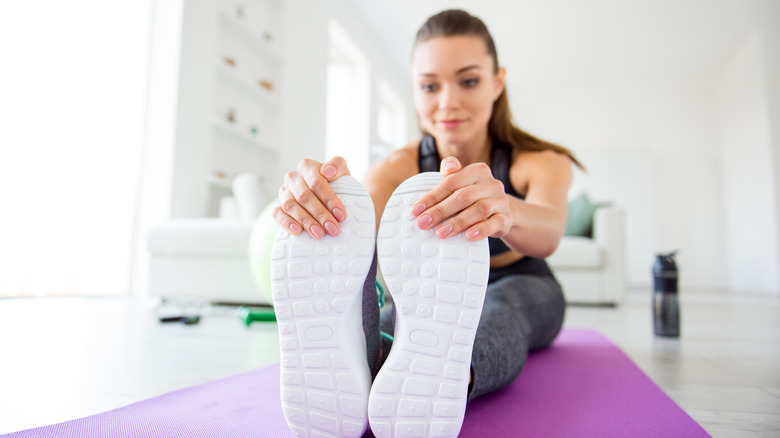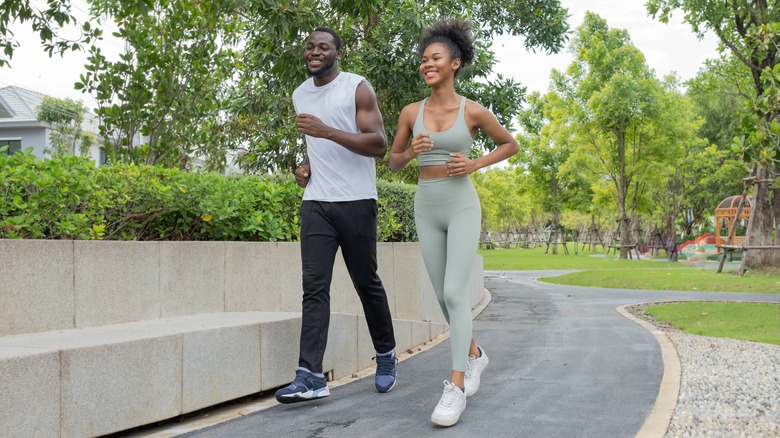How Dorsiflexion Can Make You A Better Runner
Running can make you feel great, but sometimes nagging injuries might stop your running routine in its tracks. According to Runner's World, dorsiflexion can make your running more efficient and help reduce your risk of injury. A 2014 study in the Journal of Foot and Ankle Research found that people with limited dorsiflexion developed Achilles tendinitis.
What is dorsiflexion? It's essentially what happens to your ankle when you flex your foot (via Runner's World). Although you might not pay much attention to how much your foot flexes while you walk, the angle of dorsiflexion becomes more important when you want to run fast. Ultimately, you'll look for about 15 degrees of dorsiflexion in your foot.
Most of this has to do with how your foot lands during your running stride. WHealthy Performance says that it's best to have your foot land under your hip in dorsiflexion so you use all the muscles in your kinetic chain to power you forward. If your foot lands well in front of you in plantarflexion (i.e. pointing your toes), your foot serves as a brake in your forward motion. When your foot strikes the ground, your ankle will be at about 10 degrees of dorsiflexion, according to Physiopedia. The ankle then quickly reaches 25 degrees of dorsiflexion just before you push off through your toes through plantarflexion.
Check and improve your dorsiflexion
You can check your dorsiflexion by doing a deep squat. Runner's World says that you might need to work on dorsiflexion if you can't squat deeply without falling over. Some signs of poor dorsiflexion include shin splints, pain in the bottom of your foot (plantar fascia), or knee pain. According to WHealthy Performance, problems balancing or pain in your calves during lunges might also be signs of poor dorsiflexion.
Runner's World says you can improve your dorsiflexion by doing heel walks. Without locking your knees, walk about 20 yards on your heels with your toes lifted, then walk back. Aim for three sets. Saint Luke's Hospital suggests practicing dorsiflexion and plantarflexion while sitting on the floor with your legs out in front of you. Flex your foot for five seconds, then point your toes away from you for five seconds, and repeat five times. According to Healthline, yoga poses such as chair, camel, and child's pose can help with dorsiflexion. You can also stretch your calves and make circles with your ankle joint to improve dorsiflexion.
Other ways to improve your running
According to Kinetic Revolution, your ankle should line up under the knee to avoid over-striding. Building strong glutes and core will help with your running stability. A good running posture can also improve your running. Many of us who sit at a desk all day have tight hips and slumped shoulders. Working on opening up your hip extensors and keeping your shoulders in line with your hips help your running posture.
Runner's World suggests driving your elbows behind you when you run to keep you in a forward motion. If your elbows reach out to the side, you risk wasting valuable energy because your body will follow the movement of your elbows. If you feel your pace and energy levels lag during a run, try adding 10-second speed bursts to recharge your running form. Finally, your running can also be improved if you try to run quietly. In other words, if your feet are making a lot of noise when you run, you're not landing softly.



